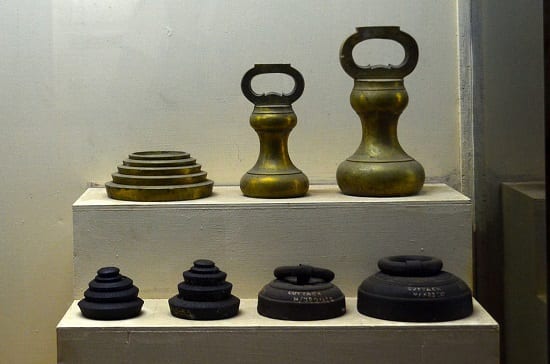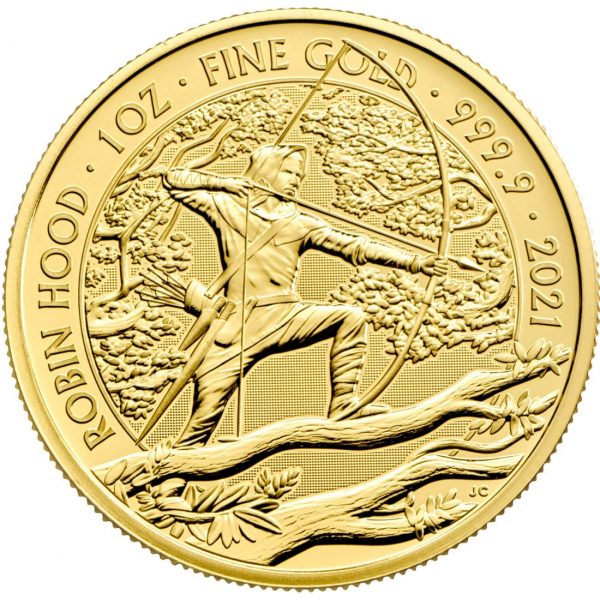What is a Troy Ounce?
04/12/2023Daniel Fisher
Free & fully insured UK Delivery. Learn more
Secure & flexible payments. Learn more

Buyback Guarantee Learn more
A troy ounce is equivalent to 31.1034768 grams and is an imperial measure used for determining the weight of precious metals like gold and silver. Usually abbreviated to “oz t” or “t oz”, the troy ounce should not be confused with the avoirdupois ounce (often known as the standard ounce). A Standard ounce is around 10% less than a troy ounce and is used to gauge the weight of other commodities such as corn and sugar.

A troy ounce weighs 31.1034768 grams, which is usually abbreviated to 31.1g. It is the last surviving troy measure still used today, exclusively associated with precious metals weight measurement. It equates to around 10% more than a standard ounce, approximately 1/15 of a pound and just over 32 troy ounces make up a kilo.
An avoirdupois ounce is the equivalent to 28.349 grams, around 10% less than the 31.1 grams in a troy ounce. The avoirdupois ounce, commonly abbreviated to simply an ounce (oz), is still widely used to determine the weight of many items, especially in North America, while troy ounces are solely devoted to measuring precious metals.
Due to the common ounce’s more widespread use, many investors new to precious metals can wrongly assume this is the weight referred to when discussing gold and silver. This can be a dangerous mistake when dealing with important financial calculations, as you’d get around 2.75 grams less gold if measured in the common ounce weighs versus a troy oz.
The exact difference in weight between a normal ounce and a troy ounce is 2.753953675g.
Free ultimate guide for keen gold investors
The below table provides the amount of troy ounces equivalent to some other common weight measurements. Conversion figures are to 3 significant figures.
Troy ounces are the universal unit of reference when quoting the gold spot price. Any report of the gold spot price will be referring to its value in troy ounces, even though the inclusion of the prefix ‘troy’ is usually dropped both verbally and in print.
This latest ‘price per ounce’ can be found updating on a live basis on gold dealers’ websites. Most will also convert and display the troy ounce price into grams for universal appeal. Despite so many units of measurement moving to metric systems, the London Bullion Market Association (LBMA) website still records the twice daily precious metals price fixes in troy ounces.

The troy ounce was used as a unit of measure first introduced in a place called Troyes in France. That’s how the name first came into day-to-day use. The adoption of the troy ounce dates back to medieval times. It is possible that the troy ounce as a unit originated during Roman times. According to historians, the Roman Empire utilised bronze bars which could be split into 12 pieces, each weighing 31.1 grams. Each of these pieces were called ‘uncia’, from which the name ounce was derived.
Europe soon developed into a business hub and the need of the hour was to have a standardised weighing unit. Merchants who came from Troyes at the time may have introduced the troy ounce as a standard measure. By the year 1527, Britain had adopted the troy ounce as the official recognised standard for weighing gold and silver. The US adopted this system in 1828. This tradition was handed down through the years and today, the troy ounce is the only ancient measure still in use for weighing precious metals like silver and gold.
Troy ounces has remained the unit of measure for gold and other precious metals for centuries to maintain trustworthy and consistent calculations. A simple and universal reference for gold measure is crucial rather than using multiple references. The unique use of troy ounces for precious metals is apt to refer to such exclusive types of commodity as no other items have their very own weight system! Gemstones used to share the use of troy measurements but chose to change to its own carat system in the early 20th century.
All precious metals including gold, silver, platinum, and palladium are still measured in troy ounces. Indeed, for simplicity of valuation many gold and silver bullion coins are minted in units of one troy ounce or fractional versions of this weight.
There are notable departures from this tradition, with many gold bars being manufactured in a wide variety of metric sizes ranging from 5 grams up to 1 kilogram. This marketing-based decision enhances their appeal and simplicity to an ever-growing customer base more familiar with the metric system. The best-known gold coin to buck the troy ounce trend is the Chinese Panda coin which is commonly produced in 30g, 15g, 8g, 3g and 1gram varieties.
The value of a troy ounce of gold fluctuates daily but stood at around £1,600 or $2,025 as at December 2023. This refers to the spot gold price in troy ounces rather than the price to buy or sell one troy ounce of gold. It would cost a premium over that price when buying an ounce gold bar or coin, and it would be worth slightly less than the spot price when selling.
Troy ounces are exclusively used when measuring the weight of precious metals coins or bars. It’s also the unit referred to when quoting the underlying gold or silver price, known as the spot price.
A troy pound is a redundant unit of measurement used specifically to weigh precious metals, equivalent to 12 troy ounces rather than the 16 ounces in a standard pound unit. It was abolished by the Weights and Measures Act of 1878, leaving troy ounces as the remaining measure.


Live Gold Spot Price in Sterling. Gold is one of the densest of all metals. It is a good conductor of heat and electricity. It is also soft and the most malleable and ductile of the elements; an ounce (31.1 grams; gold is weighed in troy ounces) can be beaten out to 187 square feet (about 17 square metres) in extremely thin sheets called gold leaf.
Live Silver Spot Price in Sterling. Silver (Ag), chemical element, a white lustrous metal valued for its decorative beauty and electrical conductivity. Silver is located in Group 11 (Ib) and Period 5 of the periodic table, between copper (Period 4) and gold (Period 6), and its physical and chemical properties are intermediate between those two metals.